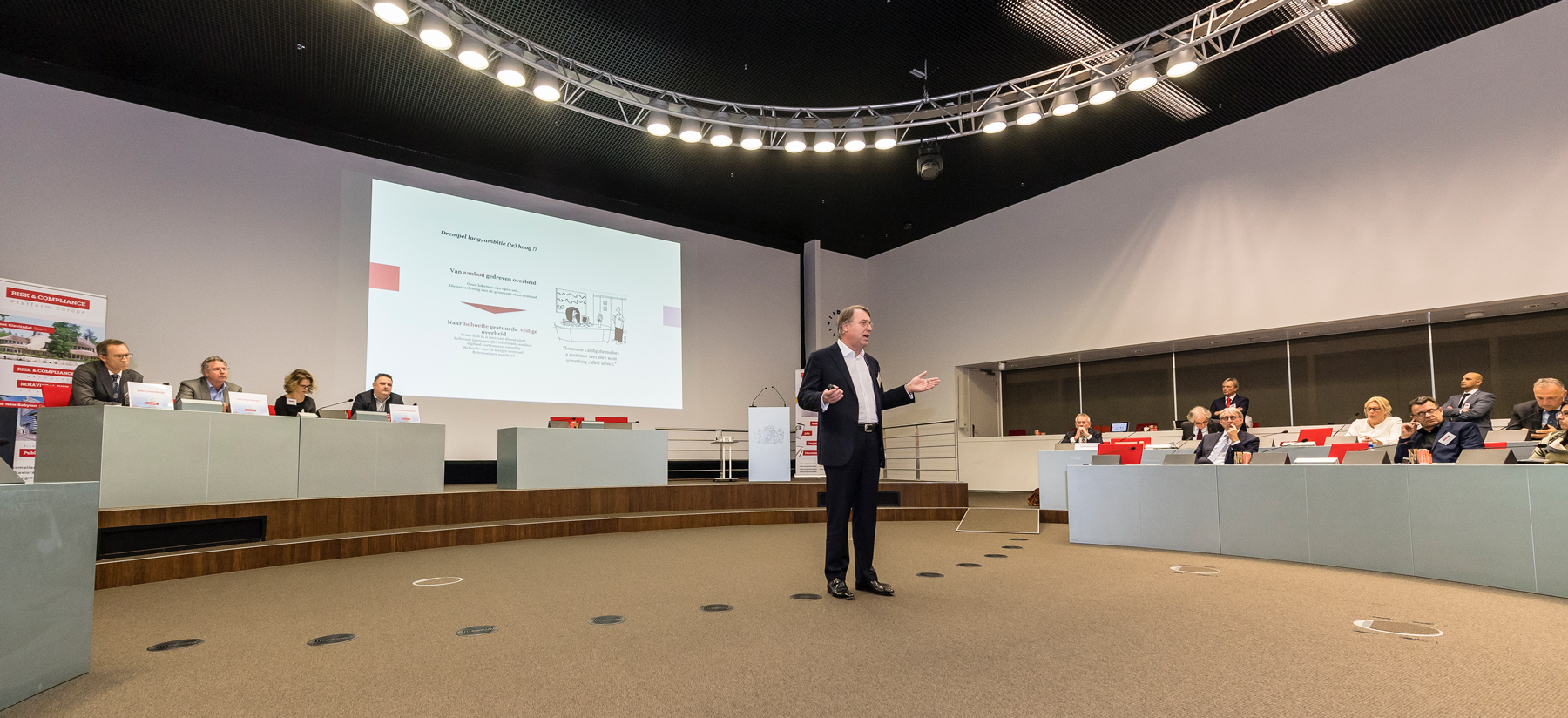Kenny van Ierlant
The digital transformation prompted by rapidly changing business models, as part of the chain reversal, has already turned the world upside down. Numerous companies and governments (organizations) have invested heavily in the digitization of their business processes as part of the chain reversal by automating non-automated processes in order to save heavily on the costs of labor to benefit the shareholders! The premise that this approach will lead to “agility” and lower cost-income ratios will not materialize the majority of case. This digitization also reveals a great sociological problem, namely that top management has no idea how such a transformation should be implemented. The lack of essential knowledge at the top level is a guarantee for many accidents and destruction of shareholder value.
Over the past thirty years, the Boards of Directors have ignored the subject with the necessary disdain and have placed them at lower levels, which are then called CIO, CDO or CTO. These mostly IT professionals have in turn set up an autonomous republic to celebrate their own IT party, speak their own language and make a non-intervention agreement with the IT suppliers. This development has gone so far as to believe in its own “bullshit” as if it were a religion. The consequence of this is that more than 90% of all organizations are stuck with IT legacy as a reflection of cumbersome business and operational models that no longer match the dynamics of the on-line digital market. One is completely ‘out of sync.’ With the arrival of GDPR the responsibility is back where it should be located at the Board of Directors.
As a reaction to the lack of knowledge and responsibility, organizations as “history repeating itself” have started investing in the digitization of their business processes where the IT department including suppliers have digitized this digitization, as it were. Under the guise of new buzz words such as Agile, Scrum, Devops, Hybrid Cloud, etc … one has, for lack of a better approach, started burning capital in the development of new legacy that the old one has to replace. Gradually, it comes to the conclusion that this form of digitization will not contribute to the necessary adaptation to facilitate the chain reversal and that all promised economics are likely to turn out negatives rather than positives. Practically all digital transformation projects end in a repetition of past failures and a reluctance among top management. The employees involved on both the business and IT side are all very enthusiastic in the first instance until the question is asked whether all these efforts will lead to considerably better ratios! It often turns out that this is not the case because one has only focused on technology and not on the economics or the consequences of GDPR.
The hunt for the old players is now on
With the arrival of multi-sided platforms from the USA such as Google, Amazon, Facebook, etc .. a new dimension has been added to the digital transformation. These autonomous platforms are an economy in themselves combining supply and demand. “High volume” markets count them to grow? their target area and they operate in a Darwinian way. The shock effect of these platforms is great because they have “state of the art”, GDPR “compliant technology”, deep pockets, great functionality and economics that can not be measured incumbent. Therefore, the hunt for the “old economy players” is full with all the emotion and dynamism that goes with it.
As a counter-reaction, existing incumbents and governments are working on regulating and cartel mechanisms to protect their markets and positions of power. Crocodile tears in the form of discussions about ethics, the Rhineland model, culture, tradition and other subjective sounds, one tries to turn the tide. Here, however, one ignores the fact that the consumer or the individual in the meantime determines “the market beat” and does not let themselves be patronized. The consumer’s ‘magna carta’ has become the new ‘Leitmotiv’ in many markets and is closely aligned and strengthened with the arrival of multi-sided platforms.
Citizens can now turn against the civil unfriendly government and other monopolists
As the third and most essential development of the digital transformation, the arrival of new EU legislation that the citizen and his data must protect, among other things, as a consequence of the resulting chain reversal. The technological revolution as the cause of the chain reversal has not only placed power with the citizen out of an irreversible market forces but also a democratic power.
The individual can now resist cartel formation and abuse of power by monopolists and civil-unfriendly governments. By engaging the judge on the basis of this legislation, and by being equal. The expectation is that many will use this. It occurs that the E.U. creating a “level playing field” where fair competition between companies and therefore the protection of the individual is centralized by means of new rules and legislation such as IFRS, PSD2 and GDPR, etc … Every citizen has the right to protection of his / her own personal data, the right to be forgotten and insight into what happens to his data. The GDPR law that has been up-to-date since the beginning of the nineties will be supplemented with the necessary sanctions as of 25 May to confirm compliance with this. The consequences of this new legislation will give the “sense of urgency” to take the digital transformation seriously as a new dimension. Where violators of the GDPR legislation still get away with a “sorry” one can be punished from May 25 with a fine of 5% of their worldwide turnover if after reporting a cyber breach, for example, no “Declaration of Accountability (DOA) )” can be submitted. The remarkable thing is that this new legislation is seriously underestimated by practically all drivers because it is considered, as during the millennium problem, that it is transient. But the annoying thing is that GDPR is going to push the directors to the facts and that it really feels that in the absence of thorough policy and implementation at the top level people can be approached legally with all possible consequences.
What should change?
Let me explain from a “holistic why” what must really change is the interaction between IT, the economic and legal perspective in thinking about a digital transformation! In the past 30-40 years, all organizations have focused on automating their business processes mostly from efficiency. This has generated a lot of prosperity that has made the business world very competitive. Since 1977 investments in IT, for example, have generated three times more prosperity than for citizens. The producer surplus has clearly been at the expense of the consumer surplus. This has caused a turnaround because everyone started using smart phones and online services after 2006. This technological revolution has heralded the arrival of the multisided platforms and a new digital society that has put the individual or consumer and citizen at the center of attention. This chain reversal in which the consumer surplus is winning the producer surplus is a prelude to major social changes with great economic and legal consequences. This transition will not go without a struggle because many established parties come into an exisential problem because the changes are simply go too fast for the adaptive power. Not only the business and operational models change, but more importantly, also the economics in which value is increasingly being developed on the basis of intangible assets x cash flow instead of fixed assets x cash flow. This new economic reality is pulling a trail of destruction by society because it shows that the long-standing economic model in 2018 no longer functions properly. Sticking to old values no longer generates shareholder value and is doomed to fail.
The economic consequences are dramatic
The economic consequences of this are dramatic. From one moment to another the old economic model is broken and long-term investments are turning into impairments, because the old IT infrastructure threatens to become the most important fixed asset, the mother of all speed bumps, for the much-needed change. to be able to carry through. From an IT perspective, a “catch 22” situation arose in which existing IT architectures have become “overnight obsolete” and have to be written off immediately.
The multi-sided platforms differs from the existing IT platforms because they are data centrically constructed and “listening”. These platforms collect data that is offered via the network and make combinations through algorithms that create new products and services, generate cash flow and above all attracting the interest of the consumer. These platforms are successful because they are extremely flexible and operate at 3-4 x lower C / I ratios based on the latest technologies. What is special is that these platforms are GDPR-compliant in view of their other architecture, in contrast to the existing self-constructed platforms of the incumbents. The old platforms of the incumbents are application centric, “send
end?”, built, inflexible and operate at extraordinarily high costs. Approximately 90% of the IT budget is spent on the maintenance of these platforms …. Partly because they have been built layer by layer over time, are poorly documented, are moderately maintained and eventually become a heterogeneous cheese, the migration to a good solution based on obsolete economics is an unachievable mission. In practice, it often appears that incumbents are of the opinion that they themselves are a platform and think they can compete with the large multisided platforms. In fact, there is a limited economy of scale, budget and knowledge to take on such a challenge. Professor Annet Aris associated with Insead therefore also talks about “Platforms or Pipelines” In reality practically every incumbent appears to be a “pipeline”. This is the first essential flaw in policy and implementation. If you make the estimation error that you are a platform while you are actually a pipeline you have actually lost the game.
Why are the old platforms not GDPR compliant?
Because the data from these old platforms are fragmented through numerous databases, different data models and linked to non-distinctive business logic, there is no way to guarantee safety. It occurs that these application landscapes with ditto data storage have never been developed to hang on the internet and in fact open the windows and doors of these organizations wide. With the arrival of the new GDPR legislation, a new game changer is coming that will put the existing platforms out of the game. Namely that in view of the above these are not safe and will never comply with a “Declaration of Accountability”. (DOA)
The recent DDoS attacks at banks prove the above
Because many boards of directors have never understood the above logic, let alone been interested in it, they have been slowed down by IT suppliers / consultants and above all internal IT employees to advise on technical solutions that are seemingly technically plausible but lack the much needed business logic and economics. With the result that one tries to host application centric platforms as a whole, to put “shiny objects” such as portals etc .. in an ultimate attempt to get them “listening”. This metamorphosis is no sinecure, and transcends the simplicity with which IT departments approach this issue. The key point is that there is a large lack of knowledge both at the board level and at the IT level, which then often leads to irresponsible digital transformation projects. This is a serious development that is virtually unrecognized, but will soon lead to great disbelief and panic football.
It must be understood that DATA is the new gold with which shareholder value can be created. But in order to get there, it must be done with the current mess of the existing systems. It is no longer financeable and it is high time to change the policy. One has to go from application to data centric to meet the speed of market development, new economics and GDPR legislation. From a legal perspective, the turnips are completely cooked if it turns out that they have become legally ‘liable’. The legal consequences are not yet foreseeable and the fines are extremely high and repetitive. Is that the burden of proof comes to lie with the companies and that practically in no way can meet the principles of this legislation. The consequences of a wrong digital transformation will cause organizations major problems because there is no simple “cure” to solve the problem. In fact, one has to start all over again; asset free, data centric, with focus on the authentic processes and that it also has to be done very quickly at extremely low costs …





